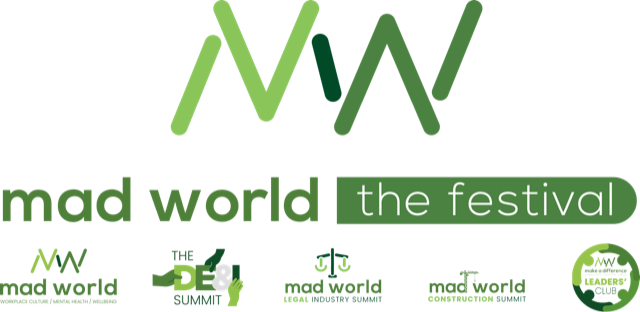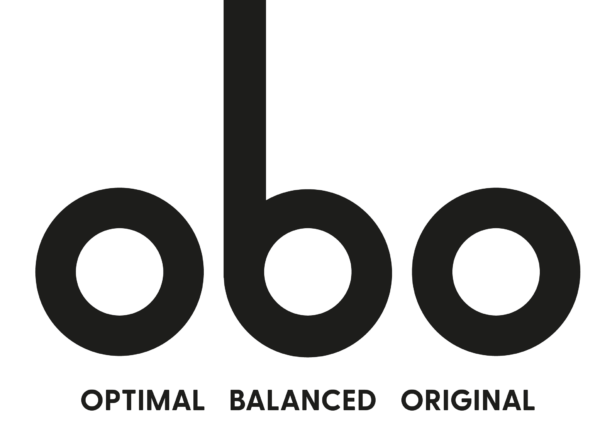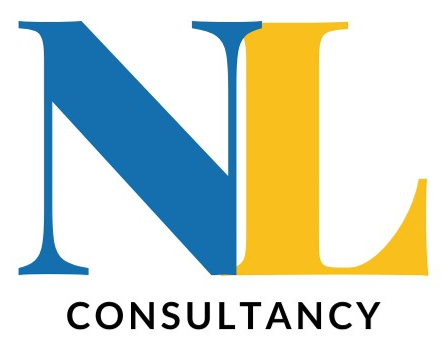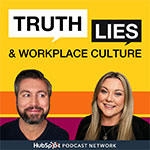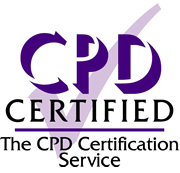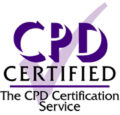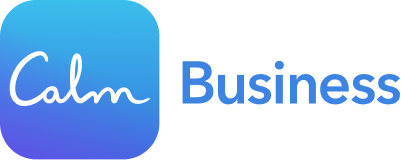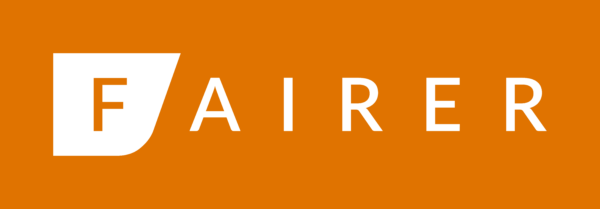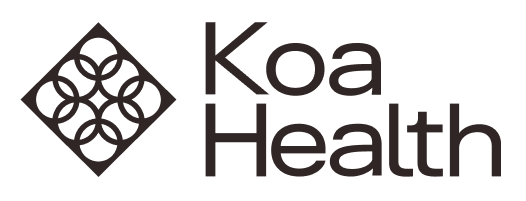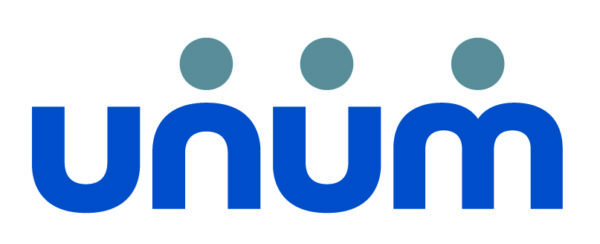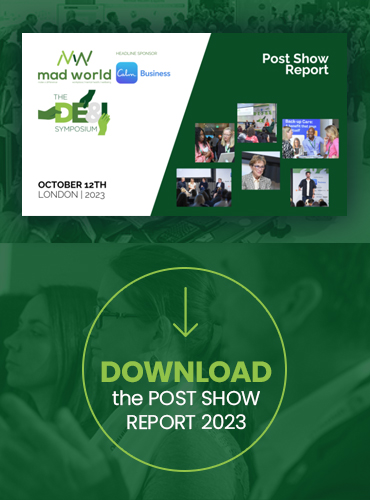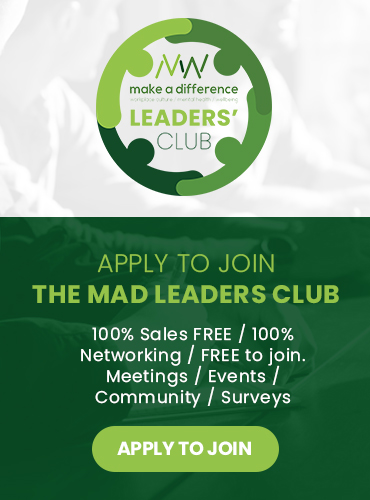The 6th annual MAD World Summit
After months of eager anticipation, the annual MAD World Summit came to life in person on October 12th in the heart of Central London. The event was a resounding success, with 970 attendees exploring inclusive workplace culture, mental health, and wellbeing content and solutions. With a diverse array of over 140 speakers, the summit proved to be a remarkable meeting of cross-sector employers in pursuit of insights and inspiration.
The MAD World Summit, renowned for its thought leadership in mental health and diversity, delivered a truly memorable experience this year. Attendees from various sectors came together to engage in conversations, share knowledge, and find solutions that promote a more inclusive and mentally healthy workplace.
One of the standout features of this year’s event was the inauguration of the Diversity, Equity, and Inclusion (DE&I) Summit. This addition emphasised the growing significance of DE&I in today’s workplace landscape and provided a dedicated space for exploring the synergies between mental health, diversity, and workplace culture.
The MAD World Summit 2023 was a celebration of insights, inspiration, and collaboration, and it set the stage for positive change in the realm of employee mental health & wellbeing, diversity, and workplace culture. It’s an event that will leave a lasting impact on the way organisations approach these vital topics. 
Key topics to be discussed:
- What you need to know to invest wisely in workplace wellbeing
- Wellbeing washing: – what it is, why it matters and how to overcome it
- The future of work through the lens of workplace culture, mental health and wellbeing
- Meeting the wellbeing needs of different working demographics in a hybrid world of work
- Safeguarding the health of the nation – getting people back to work effectively
- Creating a leadership playbook for a mentally-well organisation
- Measurement of workplace wellbeing – using data to elevate your strategy
Next year, the MAD World Summit will take place on October 17th, 2024. If you are interested in participating.
We'll Be Sharing
Latest Make A Difference News

One in three UK employees in the UK are over the age of 501, but a large proportion of this generation are being overlooked for workplace skills training opportunities and are being locked out of opportunities to upskill and re-skill in today’s rapidly evolving workplaces.
Over half of over 55s haven’t received any management or leadership training in their current role. Employees in the 23 – 38 age bracket were most likely to have participated in management and leadership training in their current role, with two thirds (67%) having received training to support the development of their management or leadership skills in their current job.
Over half of over 55s (55%) haven’t received any technical skills training on how to use digital tools and technologies, such as ChatGPT, from their employer in the past twelve months. This is over twice the number of younger adults aged 18 – 25 (27%) who haven’t received training in these critical areas in the past year.
The findings are from Corndel’s Workplace Training Report 2024, based on research conducted with 1,000 UK employees and 250 HR decision makers at large organisations2.
Furthermore, employees aged over 55 are also least likely to have received workplace training around ‘human’ management skills, such as empathy, mental health awareness and emotional intelligence, with only 25% who have received training in these areas in comparison to an average 39% across all age groups.
Over 55s value professional development and aren’t confident in their current skills set
Over half of over 55s (54%) say professional development is an important factor in their decision to stay with an organisation, suggesting employers need to shift their thinking around offering training and development for employees who are in their fifties and over. Worryingly, one in five over 55s (19%) don’t feel confident enough in their current skill set to find new employment or pivot their career if they were to lose their current job. In contrast, less than one in ten (8%) under 55s didn’t feel confident in their ability to find a new job or pivot their career with their current skill set.
James Kelly, co-founder and CEO of Corndel, said: “Skills power people and power organisations. Without providing access to adequate training opportunities, we are not allowing this group of the workforce to thrive. And businesses are potentially losing out on the huge value that this experienced group of the workforce can add if they have equal access to ongoing technical and management skills training.”
“Continuous learning and upskilling needs to be embedded into the UK’s workplace culture. In an era of the great ‘unretirement’, with thousands more over 55s working longer than ever before, alongside a time where both technology and working practices are evolving at lightning speed, people in all roles, at all levels of seniority and across all age groups should have the opportunity to enhance their skills and learn new skills to prosper in today’s workplace.”
Over 55s case study: Robin Razzell, Data Analyst at Mitie Energy
Robin Razzell is a highly experienced commercial project manager with a 24-year career spanning engineering, retail, and IT systems development and is currently a Data Analyst at Mitie Energy. Robin is currently enrolled on the Corndel and Imperial College London Data Analyst programme.
Robin says: “I’m a believer in lifelong learning. Twenty or thirty years ago, career progression by the time I got to my level often plateaued. However, now, unless you are staying ahead of the curve, you essentially become redundant, because the environment in which we work is moving forward so quickly. If you want to remain relevant to the workplace, you must upskill, it doesn’t matter what age you are. Without that upskilling, you will shortly find yourself sidelined and of no more use if you’re not educated about the current trends in the workplace environment.”
2 Opinium Research conducted an online poll on behalf of Corndel with 250 HR decision makers in organisations with 250+ employees and an online poll with 1,000 UK employees on 7th to 11th December 2023.
You might also like:

Report highlights the need to ensure skills training of over 55s isn’t overlooked
Last week, Prime Minister Rishi Sunak announced plans to combat ‘sick note culture’ by reviewing the fit note system for people who aren’t well enough to work.
Part of the plan is more “objective assessment” by unspecified “specialist work and health professionals” rather than GPs.
Commenting yesterday, at our sister event, The Watercooler, on the PM’s speech, Rosena Allin-Khan, Labour MP for Tooting and former shadow cabinet minister for mental health said: “This is why the public don’t have any trust in politicians – they seem to be out of touch, they don’t seem to come from our world [or] be relatable in any way. They don’t seem to be people who get what it’s like not to be able to get out of your bed, put your clothes on, brush your teeth and go to work because you are struggling, because you’ve been on that waiting list for three years, because you can’t get the help that you need”.
Mr Sunak’s argument is that his plans would not lack compassion as there would still be a safety net for those who genuinely need it.
Here two experts share their feedback to the PM’s plans.
Nick Pahl, CEO, Society of Occupational Medicine (SOM)
The Society of Occupational Medicine (SOM) is calling for a review of fit notes by health professionals that are also trained in occupational health. Nick Pahl, SOM’s CEO, said:
“As the PM states, the fit note is not used to its full potential, and SOM would like to see a number of actions taken”. These are:
- Comprehensive training in fit note use, combined with occupational health training, in clinial and medical curricula.
- Fit note certification acting as a triaged referral point to an occupational health professional to support return to work. Lack of skills in occupational health (OH), are barriers to using the fit note to its full potential in general practice.
- Only 50% of UK employees have access to OH and the Government needs to fund OH to support people with health issues to stay and return to work.
He added: “Fit notes generally focus on the ‘not fit’ for work option, rather than the ‘maybe fit for work’ section. Statistics show that over a third of fit notes are issued for five weeks or longer, by which time around 20% of people will never return to work”.
“Through no fault of their own, people seeing their GP team often expect an all or nothing ‘sick note’. This makes it harder to manage expectations and come to a shared decision about using the ‘may be fit for work’ option.
Discussing the merits of the ‘may be fit for work’ section, or a shorter review period before reassessment can be perceived as punitive by patients who expect to get ‘signed off’ and find it difficult to understand why their GP team would challenge this. That is why SOM is calling for tailored occupational health advice to be made available to patients who receive the fit note – with better use of the ‘maybe fit’ for work section.”
Karl Bennett, Wellbeing Director, Vivup and Chair of the EAPA
Taking a different perspective, Karl Bennett, Wellbeing Director of Vivup and Chair of the EAPA said:
“It’s incredibly insulting to assume that people are visiting their GP to be signed off with mental health issues, and that this is taking time away from GPs doing other work”.
“The issue is not having the capacity to issue ‘fit notes’, it’s having the resources available within the NHS to support those people when they are at their most vulnerable”.
“It takes courage to ask for help if you are struggling with mental health issues. Visiting a GP may be a last resort for some, so investment is needed to support people, rather than increase access to fit notes”.
“When will the government recognise that support is available through Employee Assistance Programme services? EAP’s offer everything that is needed to support people to remain at, or return to work quickly. All employees should have access to the services offered by an EAP, while employers should have funding made available to them to ensure they are not choosing between their employees’ mental health and paying a fair wage”.
“This also demonstrates the support needed by employers to help employees recognise when they are feeling low, and have in place the tools needed to support mental health issues. This includes regular training for managers around the services available to their teams and focus on organisational culture – which needs to be one of inclusiveness without fear of consequence when asking for help”.
You can view the PM’s speech in this BBC report and the full Government press release can be viewed here.
You might also like:

Experts share commentary on the PM’s plans to review fit notes
AI has been one of the hot topics at this year’s The Watercooler event. As proof of its power and role in productivity if used as a helpful adjunct, this feature brings you key insights from some of today’s sessions cherrypicked by transcription service Otter.ai…
It seems fitting to start with the session on the ‘Future ways of working’ because this session’s final conclusion (according to Otter.ai) was about the importance of integrating AI. We need to recognise, said Otter.ai, “its impact on employee wellbeing” and “the need to educate workers on its benefits and [ability to] automate routine tasks to create more engaged and healthier workforces”.
Note: while Otter.ai did an overall good job of summarising these sessions, human intervention was still necessary to add context and, sometimes, better grammar so that the notes made full sense!
As this first session below also concluded, organisations are best using AI “to complement human work, not replace it”.
Key takeaways: Future ways of working – how wellbeing and HR can adapt to the workplace of 2025
- In the new world of work, employers need to work hard to ensure employees have an emotional connection with the workplace
- Employers also need to have inclusivity at the top of the agenda when considering hybrid working
- Employees need to be involved in enhancing their own wellbeing (ie. it can’t just be seen as an employer’s responsibility; it’s a dual responsibility)
- It’s important in a hybrid working world that leaders become adept at, and trained in, managing tensions; leadership skills are crucial for organisations to navigate the future of work effectively
- Hybrid work models are challenging for leaders to manage, particularly when team members are not physically present
- Authenticity will become more important as AI is adopted more
Key takeaways: Wellbeing washing – where does the responsibility for employee wellbeing lie?
- ‘Wellbeing washing’ was defined as when organisations promote themselves as prioritising employee wellbeing, but this doesn’t match the actual experiences of employees. This leads to employees feeling unsupported, despite good intentions, and the creation of a ‘tick box’ culture
- Panel agreed that wellbeing washing is a spectrum from toxic cultures to excellent provision, with many organisations sitting in the middle
- It’s crucial to address organisational toxicity if an employer genuinely wants to support employee wellbeing and key challenges can be identified through analysing people data like attrition and productivity data
- Employers must take ownership of the wellbeing agenda and involve everyone in wellbeing initiatives; ownership and accountablity for wellbeing strategy is crucial for success
- Concerns were aired about the accountablity for wellbeing and the importance of leadership involvement with wellbeing strategies; leadership often underestimate their role in wellbeing and it’s a journey to involve them more
- Organisations are increasingly shifting from a reactive to proactive approach, as well as a more tailored approach to individuals
- Wellbeing strategies can be clearly linked to KPIs and measurable outcomes (case studies on Unilever, GSK and Johnson & Johnson mentioned)
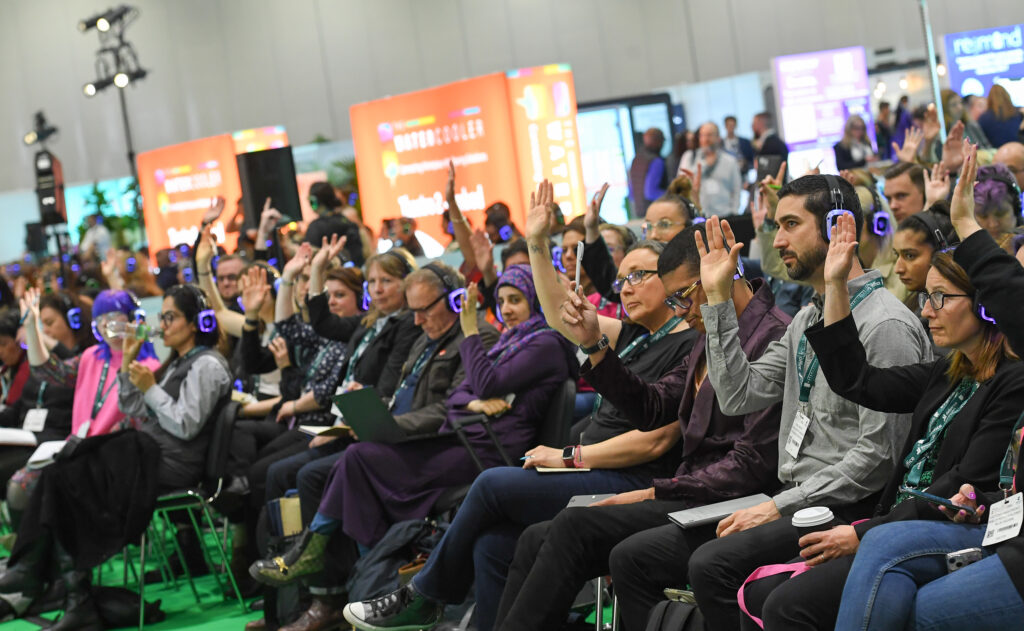
Key takeways: How to tackle wellbeing challenges and improve engagement through flexible working practices
- Inclusive design and co-creation of spaces with employees are crucial to success and directly impact an organisation’s culture and operations
- It’s vital to really understand employee needs and tailor solutions to these needs, with them
- For this understanding, talking to employees in person is key to build trust and demonstrate commitment to employees, as is having an inclusion and diversity focus
- Employers could adopt a pilot or ‘test and learn’ approach to flexible working initiatives, so they can start collecting metrics and evidence to measure the impact on things like engagement rates, sickness, absence, etc
- Organisations should empower teams to define what ‘protected time’ means for their roles and ensure that this consultation is done with an employee-led approach; don’t make assumptions about what they want
Key takeaways: The Future of the Employee Wellbeing Profession
- In the evolution of the profession evidence based approaches are crucial
- The profession requires continuous learning and staying up to date with the latest research and trends, as well as embracing change and the use of realtime data to drive positive change
- One option to continuously learn and progress a career in this industry – as talked about by panellists – is a Master’s degree in Workplace Wellbeing at the Universirty of Nottingham
- Other ways to keep up to date include reading new research, including academic papers, and connecting with other professionals in the field, as well as being connected to training organisations like CIPD
- Learning can also happen via getting feedback from employees and being curious and reflective
- In progressing in the profession, there’s huge value in sharing knowledge and research across the industry, as well as offering mentoring and support
- Health and safety skills and qualifications were cited as valuable ways to secure Occupational Health roles – health and safety professionals with risk assessment and control skills were also noted to be in demand generally
- Organisations could consider creating a ‘wellbeing book’ for managers, aligning with ISO standards, to promote knowledge and culture change, and inform employees about what the profession does
- It’s important going forward that wellbeing professionals are seen as strategic partners, not event organisers
- Professionals need to be able to link wellbeing support to performance with data to demonstrate this link
You might also like:
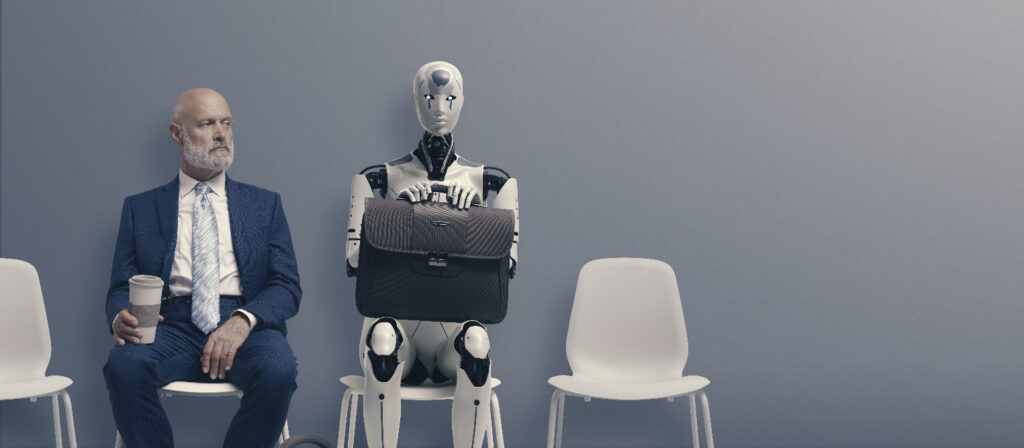
Watercooler Day 2: Key takeaways (powered by AI)
After a busy first day at The Watercooler and The Office events, here’s a roundup of five key insights I’ve taken away from sitting in on Day 1 sessions, side-conversations and our Leaders’ Lunch.
Hard to reach, or hardly reached?
Many are still struggling to support all those who need help. The panel members for the session “Aligning HR, reward and wellbeing with the organisation’s commercial strategy” all agreed that this was a key challenge and it was a recurrent theme in discussions across the day.
The comment that struck me the most around this issue was from Dr Sabrina Robinson, Wellbeing Lead with Essex County Council. When asked what she was doing to reach the “won’t and don’t” group she explained that whilst people talk a lot about the “hard to reach”, she prefers to us the term “seldom heard”. It’s not that these people aren’t giving their voices. The problem is that we’re not always able to find the right mechanisms to listen to them.
Change is the only constant
Ongoing transformation is something we’re seeing everywhere. Learning to deliver wellbeing within that context rather than in a static manner is increasingly important.
Job design, organisational design and workplace culture are fundamental
To what extent does our work and how we design it have an impact on wellbeing? Whilst we’ve been talking about the imperative of creating workplace cultures that underpin employee health and wellbeing for a while, now “job design” is cropping up regularly in conversations.
When so many are going through transformation and change and revisiting organisational design, this is the opportunity to embed employee wellbeing through job design from the very starting point.
The balance is how you make things equitable for individuals and sustainable for organisations. “I think if you can marry those two things up, you’re probably in the sweetest spot that there is” explained Stuart Hughes, President of IOSH and Head of Health & Safety at Mercedes-AMG Petronas Formula One Team.
As part of this, we need to make sure that we’re designing jobs that people can do, so that they aren’t failing all the time, but that also stretch and allow them to grow. Giving people autonomy and control over what they do day to day in their role, through job and organisational design, is also key.
Are there too many cooks?
Whilst some organisations are making great progress when it comes to taking an integrated approach to supporting employee health and wellbeing, others are still struggling to connect the dots.
“There are too many cooks” was one attendee’s simple summary when we asked the Leaders’ Lunch guests to share challenges they’ve encountered around the growing intersection between DEI and employee health and wellbeing.
When pushed to expand she explained that in her experience HR, DE&I, Wellbeing, Benefits, Occupational Health, Learning & Development, Employee Experience are all working too much in isolation. More collaboration is needed to ensure health and wellbeing support is inclusive, proactive and has a real impact.
What success looks like
Many are using 2024 to redesign their wellbeing strategies, recognising that they need a well thought out strategy, rather than adhoc interventions.
When asked “What does success look like?”, Kris Ambler, Workforce Lead, Policy and Public Affairs from the British Association for Counselling and Psychotherapy (BACP) summed it up, saying: “Think about why you need what you need. What you need has to be articulated in a strategy. Put that in place first”.
For another packed day of insight and inspiration, join us today at The Watercooler and The Office events at ExCel. You can find out more and register here.
You might also like:
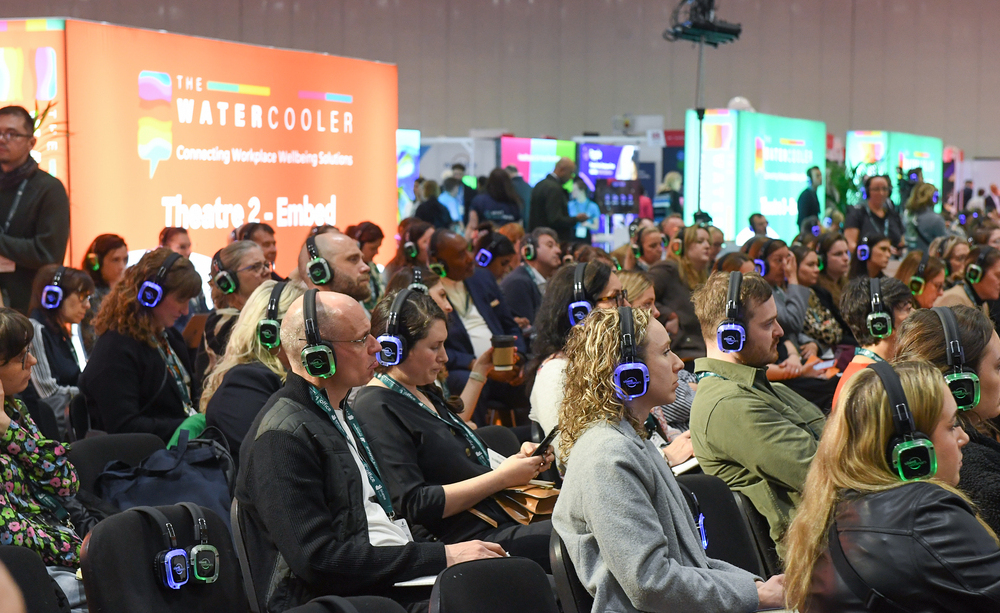
Conversations around The Watercooler: 5 insights from Day 1 of the show
Delegates always tell us that one of the most valuable takeways from The Watercooler Event, which kicks off tomorrow and Wednesday in London, is the fact you hear directly from leaders how they are dealing wtih the challenges and opportunities in the fast evolving industry of employee wellbeing.
That’s why Wednesday’s session entitled ‘Lessons from the leaders – top tips for rolling out a global wellbeing programme’ is bound to be a popular one (it takes place in Theatre 1 at 2.30pm).
We were luckily enough to catch one of the panellists, Flick Wileman, Global Wellbeing and Employee Engagement Lead at Reckitt, ahead of her appearance on this panel to get the heads up about what makes her tick…
Your LinkedIn tells the story of how important you think it is to find your ‘why’. How can we help employees have this sense of purpose?
First I’d say it’s an incredibly personal journey to find your why.
Organisations talk a lot about helping people to connect their global visions with employees’ personal visions but, actually, not everybody knows what their personal purpose is.
Creating a vision and purpose that you really connect with, and that links to your wider organisational purpose is quite a hard exercise to do; there are various tools people can use to do this. Afterall, as an organisation we’re not trying to manufacture or create a fake link to a company vision, it’s about helping to guide a personal vision.
I’ve heard companies say they are worried, if a person finds their true ‘why’ then they might leave. What do you think of that?
A ‘why’ for me is very generic. It’s not an occupational tool, it’s a personal development tool.
For example, my ‘why’ is to protect us from injustice so we can be the best version of ourselves.
That to me is very, very personal and linked to my personal values and my experiences. But it’s also very generic, so I could arguably say that I’m doing that in my HR role right now, because I’m helping people from a developmental point of view to become the best version of themselves.
What a ‘why’ shouldn’t do is speak to a specific thing you should or shouldn’t be. It should more act as a moral, personal compass on a day to day basis. I’ve found that extremely powerful.
There’s much talk of ‘bringing your whole self to work’ at the moment. Do you think that is the same thing as being authentic?
For me authenticity is acting in alignment with your values, your experiences and what you feel really strongly about, whereas bringing your whole self to work has a psychological safety element in terms of inclusion.
Tell me more about that….
Well, I feel able to be authentic and to act according to my ‘why’ and I’m very privileged in that; I am a white female in my 30s.
I think people feel able to be authentic, and act accordingly, depending on how psychologically safe they feel in their environment. That’s why I’d argue being authentic and your whole self are slightly different.
For me inclusion is a hygiene factor of wellbeing and if people don’t feel included, they’re not going to be engaged. If you think about it like a triangle, then ‘engagement’ is the peak of the triangle which is reached once someone feels included and like they’re looked after.
But as you’ve made clear you don’t work in inclusion, you work in wellbeing and engagement. Is there a separate inclusion team then?
Yes. And I work really closely with them. A lot of what I did last year was around accessibility, for instance, and how we could get people more engaged in wellbeing by making things more accessible.
Can you give me any examples?
Yes, last year, we ran a session during Ramadan about nutrition. If we’d just talked about nutrition then that might not have been very helpful for anyone who was fasting at that time. But we opened it up by using Ramadan, and its principles, to talk about fasting and avoiding certain foods, which can actually be linked to peak physical performance. So we used Ramadan as an opportunity to be more inclusive.
(Throughout this chat, Wileman also touches on sessions that cover dual purposes too, like nutrition in relation to health conditions, as well as nutrition & biomechanics in relation to menopause)
That’s interesting as some experts we interviewed at the end of 2023 predicted that there would be a growing intersection between DEI and Wellbeing in 2024. What are your views on that?
That was a key focus for us at Reckitt in 2023. But I’d say, rather than being an ‘intersection’, I see inclusion as a hygiene factor for wellbeing and engagement. Employees are simply not going to feel highly engaged or have good wellbeing levels, unless they feel there is a diverse environment that they feel included in.
For me, DEI is a fundamental underpinning of Wellbeing.
In 2023, everything I did was around asking: how do we make our existing programmes more inclusive and accessible? Then how do we amplify and build on them?
What are your priorities in 2024?
2024 and beyond is now about how we scale the concept of creating a better life for ‘everyone everywhere’.
The biggest challenge is how do you scale globally whilst keeping and maintaining a personal feel and launching on a large scale. This is tricky for a big organisation.
Caregiver wellbeing is also a big focus for you. Can you tell me more about that?
That was something that specifically came out of Covid-19. We learned through our engagement survey that caregivers specifically struggled. By that I mean anyone who had caring responsibilities, from caring for those with a disability to caring for elderly people. As a direct response to that, we built a Caregiver Programme, which we then rebuilt in 2023. We’re also in the process of setting up a support group at the moment.
Given your experience, what would be your advice for someone looking to start supporting carers?
Make it really tangible.
We focused heavily on emotional support models so people could implement the information we were giving them on a day to day basis. We know, for individuals with caregiving responsibilities, time is of the essence. They want to use the time they do have in a way that helps them, so we used ‘flip books’ which are virtual booklets to explain the tools. All they had to do was open the flip book and all the content was really easily accessible and digestible.
That would be my biggest tip: make it something they can action really quickly.
You have a very diverse and interesting career background, spanning sales and consultancy and talent and recruitment, and you’re also currently studying organisational psychology in your free time! What do you think all these experiences bring to the Wellbeing function?
A much greater commercial understanding, which has been very helpful.
Also, it means my view of Wellbeing is not at all siloed.
For me it isn’t just looking at nutrition or exercise or mental health. Of course, these are all part of it but Wellbeing is actually about who you are and living a life that looks like you, so it links closely with self-development and learning and talent. It is also about language, communication, technology, accessibility and how you get information out to people.
Wellbeing is a very broad concept.
Some people think that the word ‘Wellbeing’ isn’t helpful and we need a new word. What do you think?
Well, there is a lot of data showing that, actually, employee experience is the same as wellbeing engagement…
How much engagement is there in your wellbeing programmes?
Last year we saw a significant increase in engagement in our wellbeing programmes; we had over 20,000 attendees to wellbeing events and enrolment in our programmes increased three-fold. Wellbeing was also one our top five discussed topics in our global engagement survey for the first time ever. It just goes to show how important wellbeing is to people.
How has your degree in working organisational psychology helped you so far?
It’s been fundamental. It’s given me a really good view of how people think, and why they think it and, ultimately, that helps with engagement.
Flick Wileman is speaking at The Watercooler THIS WEEK contributing to a panel on ‘Lessons from the leaders; top tips for rolling out a global wellbeing programme’, accompanied by Gabby Wickes (Experian), Jamie Broadley (Serco), Yulia O’Mahony (Philip Morris International). This panel will take place at 2.30pm on Wednesday 24th April.
It’s still not too late to register for your free ticket here!
You might also like:

Reckitt’s Flick Wileman: the importance of knowing your ‘why’ as a leader
I had a conversation recently with the head of wellbeing for one of the UK’s major banks. Discussing the evolution of workplace wellbeing. We reflected on how far we’ve come from a time, 20 years ago, when few if any organisations had a wellbeing strategy, or indeed anything resembling a coherent approach.
The discussion was one of many I was having with the wellbeing leads from UK banks, that formed part of the Bank Workers Charity’s research into the state of wellbeing in the sector. They went on to describe their bank’s current approach as a maturity model of wellbeing –- a model that is constantly developing and being refined; one built on data and on solid foundations of internal and external research. This not only ensures that the bank’s strategy is evidence-based but that it’s designed around the specific and well understood needs of their workforce.
The wellbeing journey
I’ve been working in the wellbeing field for thirty years and it’s been fascinating to see how organisational attitudes to it have transformed. 20 years ago, employee engagement, not wellbeing was the overriding people priority for most employers. Wellbeing barely registered on the business agenda. How things have changed.
An abundance of research testifying to the productivity benefits of high levels of wellbeing, means that companies are prioritising it like never before. It is seen as an essential contributor to organisational culture and companies are continuing to increase their commitment, financially and in terms of internal focus.
Crucially, our understanding of wellbeing and the factors that influence it, is now at an altogether higher level. And that has resulted in the creation of wellbeing strategies like the one described above, that are evidence based, data driven and built upon a thoroughly researched understanding of employee needs.
A major bank priority
For many years, banks have been at the forefront of best practice in wellbeing. They were among the first businesses to shift from offering a motley array of wellbeing programmes, managed by different parts of the business – to taking a structured approach, where responsibility for the work was vested in a particular business area, usually HR. They were also among the first UK businesses to develop wellbeing strategies, a key step in establishing it as a permanent feature of the organisational infrastructure.
The strategy as a living document
But things have moved on again and, as we’ve seen, wellbeing strategies have become more sophisticated and informed by an abundance of research. It’s not enough to have a strategy in place – the strategy can never be static – it needs to be a living document, that evolves to reflect changes in employee needs.
Perhaps it’s worth reminding ourselves that even something as fundamental as financial wellbeing is a relatively recent addition to the wellbeing architecture. For many organisations it took the devastating impact of Covid and the cost-of-living crisis to merit its inclusion as a staple in their wellbeing offer.
But what we’ve also seen is a major effort within banks to develop a better understanding of the needs and preferences of their people. Through internal surveys and through focus groups, insights are gathered that inform decisions about which wellbeing choices to prioritise. And that in turn has resulted in a much closer alignment between the wellbeing programmes available and the changing needs of the workforce.
This, together with the banks’ deeper and more nuanced understanding of wellbeing conceptually, has resulted in the introduction of programmes that are more effective, that address real needs and that are genuinely innovative.
At the Bank Worker’s Charity, we’ve tried to capture some of the resulting diversity in approach, through the Banking Wellbeing Pulse, a report that explores the wellbeing landscape across the sector. Using case studies and drawing on conversations with wellbeing leads from different banks, we’ve tried to highlight some of the innovation we’re seeing. The focus of the report may be on UK banks, but we believe that by drawing attention to best practice wherever we see it, we’re providing insights that all sectors can benefit from.
Emerging issues
One of the most significant developments we’ve seen is the extent to which banks have engaged with what I would describe as emergent wellbeing issues. As a result their strategies are richer and more inclusive than ever before. Many of the concerns addressed simply wouldn’t have been considered relevant a few years ago.
The most obvious example is menopause, which banks, like many large corporations, have recently prioritised. Earlier than most, in 2019, Santander made the Peppy menopause app available to their people as a part of a comprehensive support package that included the creation of a cohort of menopause advocates.
Other examples are less obvious. UBS have introduced a very welcome package of support for dementia carers. This seems particularly forward thinking, because with a population that is living longer, this is an issue that will only affect more employees in the future. Several banks including Barclays, NatWest, Lloyds and HSBC have signed the “Working with cancer” pledge, committing to creating an open and supportive culture for those living with the disease. In some banks this is forming the basis of a much broader platform of support, including training for line managers and creating peer support groups that provide information and a safe place to share experiences.
At NatWest, an innovative package of measures around fertility saw them recognised as the best company for supporting fertility and pathways to parenthood. HSBC meanwhile produced a toolkit to address one of the biggest anxieties for nearly all carers – planning for the time when they, as a carer, would, no longer be around to support their dependent.
These are just a handful of ways in which we’ve seen banks expand the range of their wellbeing provision into exciting new areas and at the same time, create more inclusive support for their people.
The Banking Wellbeing Pulse Report
In the report we also highlight other examples using case studies to show how and why these programmes were introduced and the ways in which they’ve benefited participants.
The report comprises 6 sections. It can be read as a straightforward narrative, but each section is self-contained and can be read independently. Future editions will again feature innovative initiatives that will hopefully inspire others. Each will also contain a special report on a topical issue that is having a profound impact on the wellbeing of large numbers of people.
Almost inevitably, in the current edition we focus on the cost-of-living crisis, which continues to be the single biggest factor affecting wellbeing in the UK. The next edition will address what has become a major preoccupation for large numbers of employees, especially parents – the crisis in the mental health of children and young people.
Whilst creating the report it has been fascinating to observe the different journeys banks have taken to achieve their wellbeing goals. Of course, that is how it should be – every organisation’s approach should be unique, bult around their own distinct characteristics and needs. I’ll be following their progress with great interest.
Banking Wellbeing Pulse- the state of wellbeing report can be accessed online or downloaded, via this link: Banking Wellbeing Pulse – The Bank Workers Charity (bwcharity.org.uk)
About the author
Paul Barrett is the Head of Wellbeing for the Bank Workers Charity. He is an occupational psychologist with over 30 years’ experience in the wellbeing field. He is an established commentator on workplace wellbeing, writing for a range of HR journals as well as for financial sector publications like Financial News and Chartered Banker magazine.
You might also like:
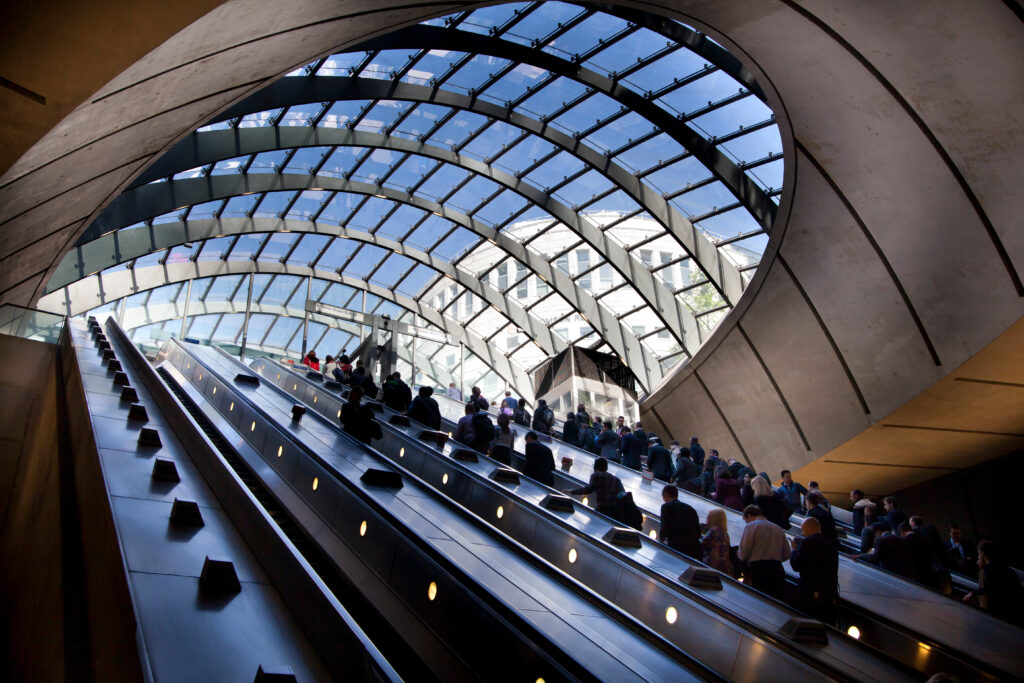
Wellbeing in the banking sector – an evolving story
When you are responsible for protecting the wellbeing of others, it can be easy to forget about your own mental health. Navigating through a multitude of challenges, today’s leaders need to prioritise self-care to avoid burnout while providing support to their teams. From practising intentional recovery to reframing perception, here are seven ways leaders can cope with stress in a demanding work environment.
Dedicating time for recovery
To effectively manage a company or team, leaders need to be able to handle the pressures that come with it. But pressure and stress are two different things. Prolonged high levels of pressure will trigger a stress response that’s why it is crucial to take proactive steps before it happens, says Vicky Smith, Senior Consultant at WorkingWell.
“In the rush of things, leaders often forget to grant themselves a break. But to sustain a high level of performance, you need to practise intentional recovery. By intentionally recovering your energy every 90-120 minutes, you can be at your optimum for most of the day and achieve personal sustainability that will help you cope with stress,” notes Smith.
Intentional recovery is crucial not only for leaders but for their teams too. “You should build it into your organisational culture and show people that taking regular breaks between tasks is an encouraged practice,” she concludes.
Investing in external support
Whilst leaders may be prepared for their technical role, often they are unprepared for the psychological and emotional intricacies associated with their position. This is why working with an independent professional coach and mentor can be invaluable when handling stressful situations, says David Roche, author of “Become a Successful First-Time CEO”.
When feeling stressed, leaders can struggle to see the best route forward. But David points out that an experienced coach/mentor not only helps the individual to find their own best route, but can also provide practical advice, leaving leaders empowered to take steps forward.
For Roche, engaging a professional coach and mentor is a relatively minor investment, but has major long-term commercial and personal payback. “Leaders need a safe sounding board and a wise head to help think things through and by implementing a coach/mentor into your routine, the positive results can be dramatic,” he explains.
Empathy as a foundation
Leaders seeking to mitigate the negative impact of stress in the workplace need to treat themselves and others with kindness and empathy. As Sue Musson, author of “Firecracker Leadership”, says, “Think of the aeroplane safety demonstration; you need to put your own mask on first before you can help others.”
Leaders should put on their own stress management mask first by checking resilience levels and boosting any areas that are flagging, focusing on eating well, moving well, thinking well and sleeping well. They can then assist others. Asking a simple, “Are you ok?” can be the key to unlocking conversations about stress and resilience, fostering a culture of care and understanding.
“Leading with empathy is so important in managing workplace stress, but avoid absorbing negative emotions without perspective and a solution focus. Leaders should keep their head (analytical), hands (technical) and heart (emotional intelligence) skills in balance,” argues Musson.
How helping others, helps you
When employees are overwhelmed by stress, it has a huge impact on a leader’s own wellbeing. Whilst it is essential leaders are aware of the stress levels of their teams, there should also be a focus on individual resilience and ownership so teams feel empowered to problem-solve where they can before escalating to the leaders, explains Jeremy Blain, author of “Unleash the Inner CEO”.
Blain highlights how this can be achieved through distributed leadership and building a more horizontal organisational structure. “By creating an organisational culture that prepares their team with the skills to step in, step out and step up, leaders can feel more confident their team is empowered to navigate workplace challenges independently,” says Blain.
“Of course, it is essential leaders are available to support their team through stressful situations, but by investing in building individual, team and organisational resilience too, leaders mitigate bigger problems further down the line,” argues Blain.
The power of delegation
The personal weight of responsibility and tough decision-making can be overwhelming for leaders. When steering the ship, the pressure of trying to spin many plates can cause intense levels of stress. Rather than try to manage the business single-handedly and be the go-to person for everything, Alexis Sikorsky, author of “Cashing Out”, advises leaders to lean into the skills of others and delegate to those most skilled in that area to help manage personal stress.
In Alexis’ own career it took him fifteen years to realise that whilst he might be quite a good leader, he was actually not as skilled at managing. Rather than becoming stressed trying to plug that gap, he placed his focus on creating a vision and motivating other people to make a plan that will take the business there.
“As the captain of the ship, it is essential you’re protecting your wellbeing. If you lack the skills you need, rather than dwelling on this as a weakness, instead go and find somebody who has them. You will save yourself stress in the long run and set everyone up for success,” says Alexis.
Reframing perception of stress
In recent findings by The Workplace Health Report, 54% of people agree that the perfect amount of stress enables them to thrive. Adopting stress as a catalyst can serve as a powerful mindset tool for achieving success and also in the way managers lead others.
Dr Lisa Turner, Mindset and Resilience Expert and Founder of CETfreedom, advocates it can be useful; “If we are able to identify our physiological and emotional responses to stress and redirect that energy towards concentration, productivity and effectiveness, we can choose to view stress as a motivating factor enabling us to push towards peak performance.”
Lisa explains, “Just the right amount of stress is not only helpful but essential for accessing a flow state. This is a state where the individual is completely immersed in the task at hand, it feels joyful and triggers a sense of accomplishment and achievement. But to access deep flow we need the perfect skills-challenge balance. Too much stress and we can’t get into flow, too little and we will be bored. Finding your personal flow triggers is key to accessing flow.”
Connecting with your emotions
As the key person in an organisation that people turn to leaders can feel pressured to uphold certain expectations, thinking not showing emotions such as stress makes them appear more resilient or automatically take on additional work for themselves. However, as Blaire Palmer, author of Punks in Suits explains, “Leaders sometimes try to act like superhumans, believing that having the big job title means they are either more capable of dealing with stress, or that high levels of stress are the price they pay for holding such a senior position. In reality, neither of these things are true.”
Palmer believes that good leaders should be willing to connect with their emotions, not just their ‘logical brain’, “Opening up about the emotions you are experiencing not only lifts a weight off your shoulders, but creates greater trust and understanding amongst your team. At a time where AI and technology are advancing, it is your emotional self-awareness and empathy as a leader that is your defining skill and talent.”
You might also like:

Leading by example: How leaders can cope with and harness their own stress
Ahead of this year’s The Watercooler and co-located The Office Event, we asked the speakers what they’re looking forward to about the show. Here’s what a selection of the 100+ speakers told us.
Their far-ranging comments reflect the breadth of the content that the event will be covering – enabling employers to find the right ways to support the holistic health and wellbeing of their people and create inclusive cultures of care where everyone can thrive.
Dr Nicola Millard, Principal Innovation Partner, BT Group: “I’m happy to be at an event which is discussing vitally important things such as how we can make work work better in the future – for people, productivity and the planet!”
Helen Tomlinson, Government Menopause Employment Champion: “I’m really excited to be part of this conversation looking at how cultural change in the workplace can have a positive impact on hormonal, mental and financial health”
Alan Mochrie, Wellbeing Manager, NatWest: “I’m looking forward to speaking alongside industry leaders and wellbeing specialists, and also listen in for new insights and ideas across the sessions”.
Maria Anderson, Global Head of Health, Safety & Wellbeing, Cambridge University Press: “As the dates draw near, my excitement grows. Looking forward to immersing myself in knowledge, networking, and inspiration at The Watercooler on April 23rd and 24th of April. See you there!”
Isaac Harvey MBE, President, Wheels and Wheelchairs: “Excited to share the stage with Lee Chambers and connect with like-minded individuals”.
Nimisha Overton, EMEA Diversity, Equity & Inclusion Lead, Canon: “I am looking forward to joining alongside other leaders in workplace culture, DE&I, employee health and wellbeing”
Gareth Hind, Director of Colleague Experience & Relations, First Bus: “I am really looking forward to joining other leaders in this important conversation – sharing what we do at First Bus and learning from others too”.
Jamie Broadley, Head of Health & Wellbeing, Serco: “I’m excited to get back to The Watercooler to hear from others driving change in this space, discuss the latest best practice and find new ways to keep improving workplace wellbeing for my colleagues”
Dr Catherine McKinven, Clinical Lead Psychologist, Lyra: “Wellbeing washing is such a hot topic and I’m excited to bring my passion and knowledge to the table discussing the necessity for quality clinical mental health support services to provide individualised support – this is essential to meet the evolved needs of the UK workforce and their families. It’s simple, we need to move beyond tick boxing and into meaningful action to make an impactful difference!”
Jackie Buttery, Head of Benefits & Reward, Travers Smith: “I am very much looking forward to the event, bringing together leaders who are spearheading efforts to enhance workplace culture and employee health and wellbeing”.
Natalie Jutla, Employee Benefits & Financial Wellbeing Lead, DEFRA: “Really looking forward to speaking at and attending The Watercooler event on 23 and 24 April 2024. It will be a great opportunity to discuss key areas of focus in the Wellbeing space -in particular for me the Financial wellbeing and fitness of employees as we continue to navigate the cost of living challenges”.
Amanda Moore, Head of Reward, OVO Energy: “I’m excited to join other leaders in the wellbeing, culture and reward space to connect, be inspired and share experiences”.
Mark Wilson, Mental Health & Wellbeing Manager, Ford Motor Company: “I am excited and honoured to be speaking at The Watercooler about the importance of wellbeing in all our lives and the importance of nurturing a culture for it to thrive”.
Emily Warren, Global Wellbeing Lead, Avanade: “I’m delighted to be speaking, but I’m most excited about the opportunity to exchange ideas with other wellbeing professionals, which is vital to ensuring I can continue shape a strategy that delivers the best outcomes for our people”.
Prof Liza Jachens, Deputy Course Director, MSc in Workplace Health & Wellbeing, University of Nottingham: “Come and join us as we navigate the future of employee wellbeing, transforming into indispensable leaders for healthier, thriving workplaces”.
Dr Sabrina Robinson, Wellbeing Lead, Essex County Council: “I’m looking forward to contributing to discussions and learning from fellow panellists around how we can transform our understanding of our people and their priorities into a strategic advantage, weaving wellbeing into the core of organisational cultures.”
Dr Samantha Wild, Women’s Health Clinical Lead, Bupa: “I am excited to join the women’s health panel discussing topics from endometriosis to menopause, and exploring the integration of progressive strategies and comprehensive support mechanisms for women’s health into the workplace”
Francoise Woolley, National Lead for Mental Health, Acas: “I am looking forward to the opportunity to share collective insights on fostering health and wellbeing in the workplace”.
Sophia Nicholls, Culture Consultant, SMRS: “We are excited to look into the future of culture with other industry leaders during our workshop titled – ‘What does the future of culture look like?’ Hopefully see you there!”
Racheal Smith, Head of Learning, Entelechy Academy: “Looking forward to talking about all things culture at The Watercooler and helping people go to work with purpose. Such a great line up! Proud to be a part of it.”
Dr Gary Crotaz, host of The Unlock Moment leadership podcast: “It is my huge pleasure to be joining so many respected leaders in workplace culture, employee health and wellbeing at The Watercooler Event 2024.”
Chas Howes, Former CEO, Superdry: “I have been looking forward to this event for some time and it is now here! The increase in mental health issues is palpable and we need to do something about it quickly. The Watercooler event goes a long way to that end and I would urge you to attend!”
If you haven’t already, you can find out more about The Watercooler Event and co-located The Office Event and register free (for employers – nominal charge for suppliers) here.
You might also like:
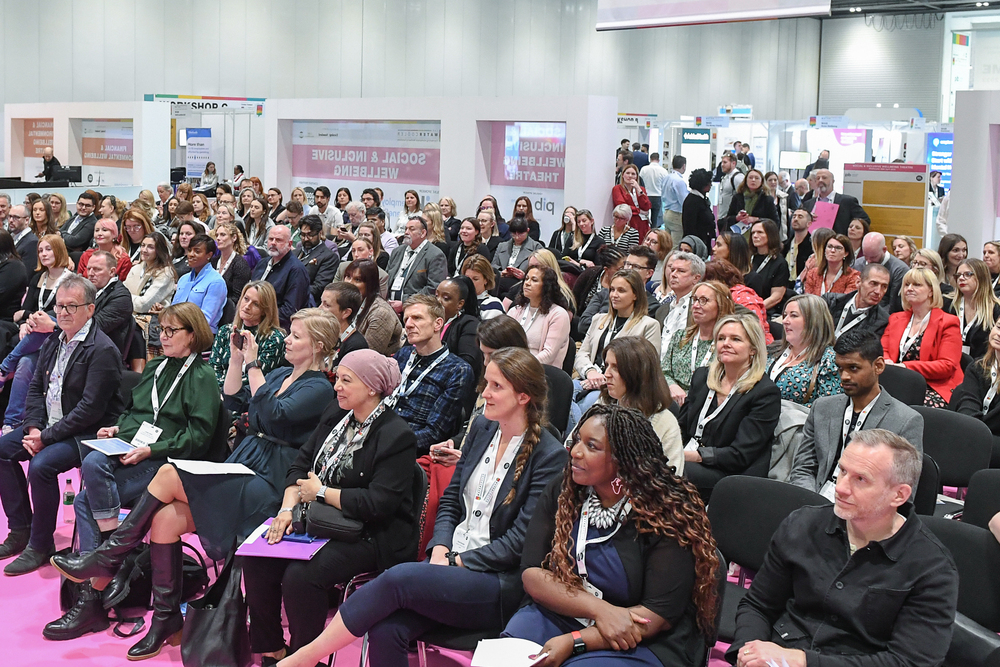
Speakers tell us what they’re looking forward to at The Watercooler Event next week
Over the last 40 years we have seen a continual increase in the percentage of women in employment. This achievement is, in part, thanks to societal and government led campaigns and initiatives to get women back into the workplace after having children.
However, this increase, twinned with the fact that we are an ageing population and working much later in life, creates some interesting challenges around women’s health and wellbeing in the workplace.
It’s no secret that women experience some rather complex life transitional stages, namely menstrual health, fertility issues and perimenopause and menopause, each presenting physical, emotional and psychological challenges. It should then be no surprise that recognising and responding to these challenges is fast becoming a critical focus for business leaders striving to foster a high-performing work environment.
Understanding the legal framework around these issues is an important starting point to ensure businesses are not only compliant with their legal obligations but protected against potential claims (and particularly given the fact that there has been a 75% increase in Employment Tribunals citing menopause-related issues, we should really be making this top of the business agenda).
But should we not be taking this even further to benefit everyone? Surely there is a societal contract to create a workplace that goes over and above the legal minimum, that places these issues at the heart of business to strive to engage, empower and enable the female workforce to not just cope with their situation but try to thrive through it?
Understanding women’s health
Menopause
Menopause is a transformative experience that brings about physical, psychological and emotional changes for those going through it. Common symptoms include hot flushes, mood swings and joint pain, but there are thought to be at least 40 potential symptoms which can change over time, making them difficult to manage and often leading to misdiagnosis.
The transition, which lasts on average between four and seven years, can have a debilitating impact, hindering an individual’s ability to enjoy daily life, maintain relationships and perform optimally at work. Indeed, the psychological impact of this life stage is the one most likely to create the biggest work hurdle but also negatively impact businesses too.
Maternity and Fertility
Another key element of women’s health and wellbeing in the workplace is the maternity and fertility minefield. Around 17.5% of the adult population – roughly 1 in 6 worldwide – experience infertility (WHO) and given the likely age range of those seeking treatment, that’s a significant proportion of our workforce.
Fertility Network UK has acknowledged that over 3.5 million people in the UK go through some kind of fertility challenge, a deeply emotional and, for some, traumatic life experience. From the practical perspective, the nature of fertility treatment (being linked to the female menstrual cycle) means appointments are often scheduled at short notice, creating a direct impact on a women’s working life and schedule.
Menstrual health
We also need to consider potentially still one of the biggest taboo topics in the workplace – periods.
It’s perhaps unsurprising that a recent survey by HR Zone found that a third of male workers believed it is unprofessional to talk about menstrual health at work, despite the fact that 1 in 3 women describe their periods as heavy.
While for some, periods are simply a monthly annoyance, for others, the physical and behavioural impact of the menstrual cycle can be so severe it leads to performance dips in the workplace – which can then become more severe during perimenopause. Many women suffer in silence, ‘soldiering on’, all the while their performance and engagement at work steadily declines.
The legal playground
So, what does this look like? What rights do employees have and what does an employer need to do to ensure they are legally compliant?
The short answer, at first look, is not a lot.
At present, there is no single piece of legislation that is applicable to menstrual health, fertility and/or menopause. An organisation has no legal obligation to allow time off for fertility appointments and there’s certainly no such thing as ‘menstrual leave’ in England and Wales.
However, other countries are taking another perspective on this. Perhaps they are being more long-sighted from a business perspective, recognising the benefits that can be achieved from taking a different approach?
Whilst the UK Government recently rejected calls from the Women and Equalities Committee to make menopause a standalone protected characteristic under the Equality Act 2010, businesses need to be aware that employees who are mistreated by their employer in connection with menopause, menstrual health or fertility treatment, can bring claims under that legislation.
Cases have been brought, and upheld, against organisations who haven’t created the right environment for their female workforce, with the Equality Act 2010 being successfully applied in several cases citing harassment and discrimination on the grounds of gender, age and disability.
With regard to fertility issues, while the law doesn’t, at present, allow employees time off for treatment and appointments, this could be about to change. A Private Members Bill was brought forward in November 2022 which would make it a legal requirement to enable employees to have time off for fertility appointments and connected purposes. This Bill is currently at second stage reading in the House of Commons and one that employers need to be aware of and ready to implement.
In addition, it’s vital to remember that if an employee becomes pregnant though fertility treatment, they have all the same pregnancy and maternity rights as other pregnancies -and an employee is still protected by law against pregnancy discrimination for two weeks after finding out that an embryo transfer was unsuccessful.
The female future
Is being legally compliant enough? Should we instead be exploring the idea of a societal contract – a contract between employees and employers that actually benefits the business interests and the employee, placed at the heart of the organisation? What would that look like?
Maybe it would involve menopause mentors – individuals throughout an organisation who can spot struggling employees, signposting to help and, perhaps most importantly, be a confidant. What about wellbeing champions who are charged with supporting and speaking up for specific areas of wellbeing for both men and women? Perhaps the answer lies in awareness campaigns that breakdown the stigma around things like menstrual health, infertility and menopause through lunchtime seminars and staff workshops or even simply awareness posters that show your workforce you recognise and understand the complex emotions and challenges women’s health and wellbeing can create.
By providing your female staff members with proactive support and a safe working environment you’re not only likely to be legally compliant, you’re also likely to experience benefits where talent attraction and staff retention are concerned. Staff who feel safe and secure at work are much less likely to look elsewhere and you can build a reputation as an organisation that empowers and advances its workforce which is only likely to bolster your employee value proposition. We need to remember that women’s wellbeing is not just about the impact on the person you employ but also on the people around them. Doing business this way is sure to bring about whole business benefit.
Small interventions can have a significant impact. They demonstrate how seriously an employer takes the challenges to health and wellbeing employees face and opens the dialogue to help reduce and remove any remnants of taboo and stigma. The result? Happier staff, empowered to perform at the best of their potential and take your organisation to the next level.
The future seems to be in our hands, and as we raise our next working generation, let’s ensure they enter a workplace that is not just compliant, but a workplace that understands, empathises and really empowers women and the complex creatures we are, so our entire workforce can benefit.
To hear more about our view on women’s wellbeing in the workplace please join us at our WaterCooler workshop where we will be joining forces with Myla Health to consider not only the legal landscape but the clinical and HR framework around women’s health and wellbeing.
About the author:
Pam Loch is Solicitor and Managing Director at Loch Associates Group. Pam set up Loch Associates Group in 2007 to respond to the need for commercial and bespoke legal and people solutions for clients. She has continued to evolve the business to respond to client needs and is now proud to have services offering solutions in all elements of HR, employment and business law.
As well as being the Managing Director of Loch Associates Group, Pam has also been a specialist, award-winning employment law solicitor for over 20 years and is a dual qualified solicitor, having qualified as a solicitor in 2000 in Scotland and England & Wales.
Loch Associates Group will be running a workshop at The Watercooler event on 23rd April from 15.00 – 15.45 entitled “Women’s Wellbeing at Work – understanding the connection between law and clinical health“. You can find out more and register to free to attend here.
You might also like:

